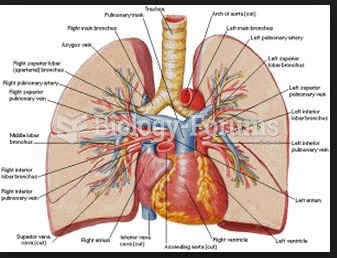|
|
|
The horizontal fraction bar was introduced by the Arabs.
A seasonal flu vaccine is the best way to reduce the chances you will get seasonal influenza and spread it to others.
Earwax has antimicrobial properties that reduce the viability of bacteria and fungus in the human ear.
People often find it difficult to accept the idea that bacteria can be beneficial and improve health. Lactic acid bacteria are good, and when eaten, these bacteria improve health and increase longevity. These bacteria included in foods such as yogurt.
The eye muscles are the most active muscles in the whole body. The external muscles that move the eyes are the strongest muscles in the human body for the job they have to do. They are 100 times more powerful than they need to be.






